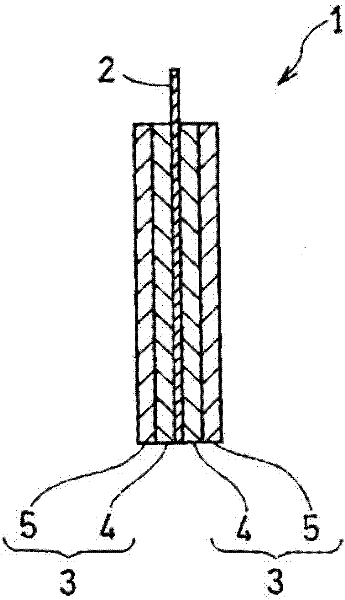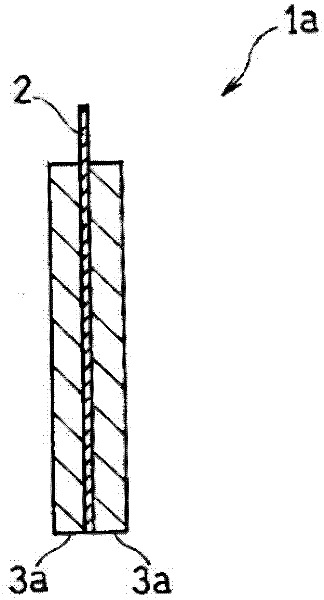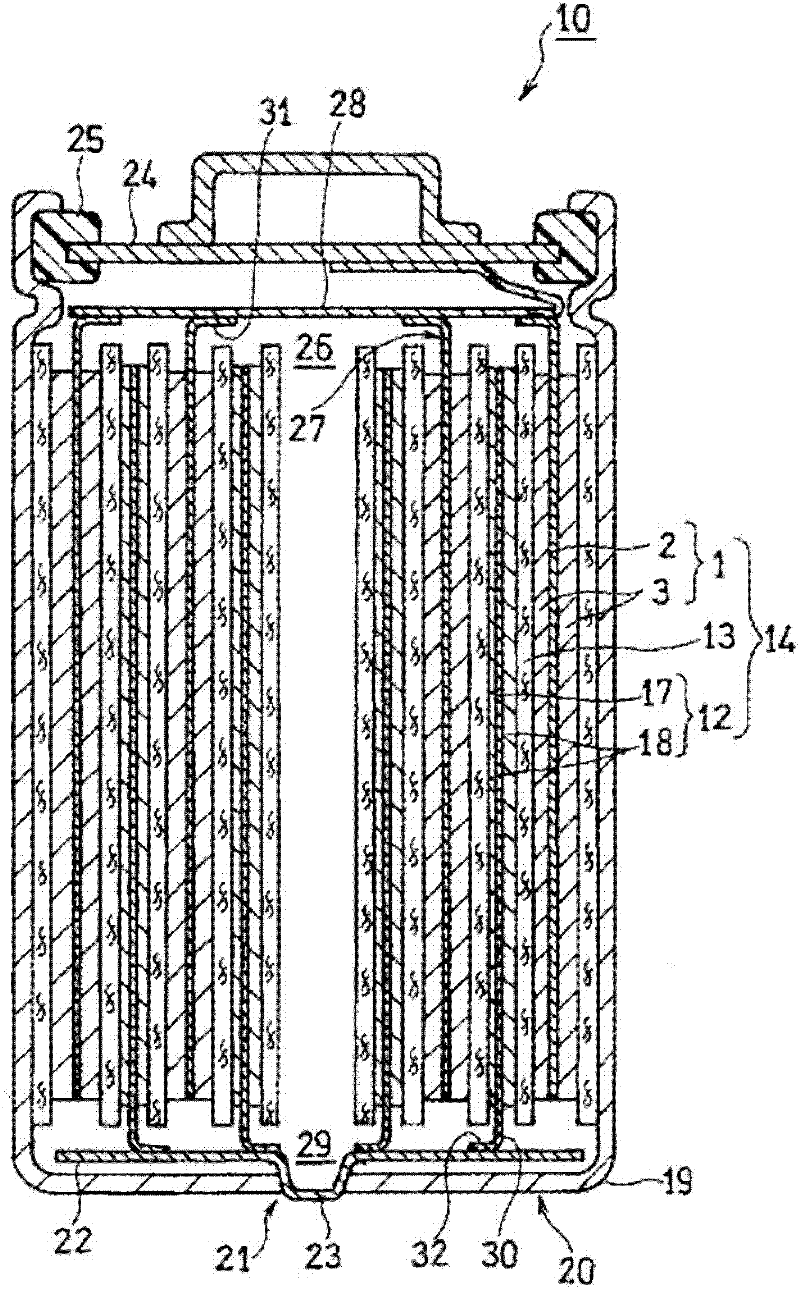Positive electrode for lithium ion battery, method for producing same, and lithium ion battery using the positive electrode
A technology for a lithium ion battery and a manufacturing method, applied in the field of lithium ion batteries, can solve the problems of low reactivity and reduced internal resistance of the lithium ion battery, and achieve the effects of excellent durability and reliability
- Summary
- Abstract
- Description
- Claims
- Application Information
AI Technical Summary
Problems solved by technology
Method used
Image
Examples
Embodiment 1
[0081] (1) Preparation of positive electrode active material
[0082] Lithium carbonate (Li 2 CO 3 ), by Ni 0.75 co 0.2 al 0.05 (OH) 2 The represented co-precipitation hydroxide makes the ratio of the moles of Li in lithium carbonate to the total moles of Ni, Co and Al (Ni+Co+Al) in the above-mentioned co-precipitation hydroxide reach a ratio of 1:1 mixed in a manner, and the resulting mixture was calcined at 700° C. for 20 hours under an oxygen atmosphere. After calcination, the calcined product was pulverized and classified to obtain a lithium-containing nickel oxide having an average particle diameter of 10 μm. The composition of the obtained lithium-containing nickel oxide (positive electrode active material A) is LiNi 0.75 co 0.2 al 0.05 o 2 , and the content ratio x of Li was 1.00.
[0083] On the other hand, Li 2 CO 3 and Ni 0.75 co 0.2 al 0.05 (OH) 2 The mixture was mixed so that the ratio of the number of moles of Li to the total number of moles of Ni...
Embodiment 2
[0100] Except for Li 2 CO 3 and Ni 0.75 co 0.2 al 0.05 (OH) 2 A lithium-containing nickel oxide having an average particle diameter of 10 μm was obtained in the same manner as in Example 1 except that the molar ratio of Li to the sum of Ni, Co, and Al was mixed so as to be 1.030:1. The resulting lithium-containing nickel oxide has a composition of Li 1.030 Ni 0.75 co 0.2 al 0.05 o 2 , the content ratio x of Li was 1.030. A battery was produced in the same manner as in Example 1 except that the outer layer of the positive electrode was formed by using this lithium-containing nickel oxide instead of the positive electrode active material B.
Embodiment 3
[0102] Except for Li 2 CO 3 and Ni 0.75 co 0.2 al 0.05 (OH) 2 A lithium-containing nickel oxide having an average particle diameter of 10 μm was obtained in the same manner as in Example 1, except that the ratio of the moles of Li to the sum of the moles of Ni, Co, and Al was 1.031:1. The resulting lithium-containing nickel oxide has a composition of Li 1.031 Ni 0.75 co 0.2 al 0.05 o 2 , the content ratio x of Li was 1.031. A battery was fabricated in the same manner as in Example 1 except that the outer layer of the positive electrode was formed by using the lithium-containing nickel oxide instead of the positive electrode active material B.
PUM
| Property | Measurement | Unit |
|---|---|---|
| Thickness | aaaaa | aaaaa |
| Thickness | aaaaa | aaaaa |
| Thickness | aaaaa | aaaaa |
Abstract
Description
Claims
Application Information
 Login to View More
Login to View More - R&D
- Intellectual Property
- Life Sciences
- Materials
- Tech Scout
- Unparalleled Data Quality
- Higher Quality Content
- 60% Fewer Hallucinations
Browse by: Latest US Patents, China's latest patents, Technical Efficacy Thesaurus, Application Domain, Technology Topic, Popular Technical Reports.
© 2025 PatSnap. All rights reserved.Legal|Privacy policy|Modern Slavery Act Transparency Statement|Sitemap|About US| Contact US: help@patsnap.com



